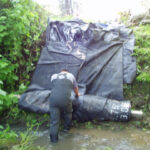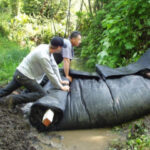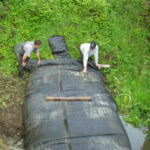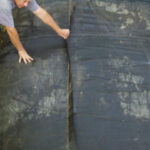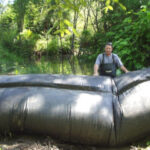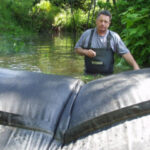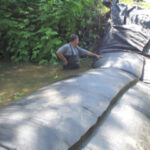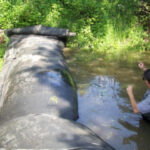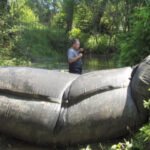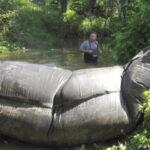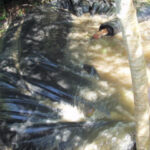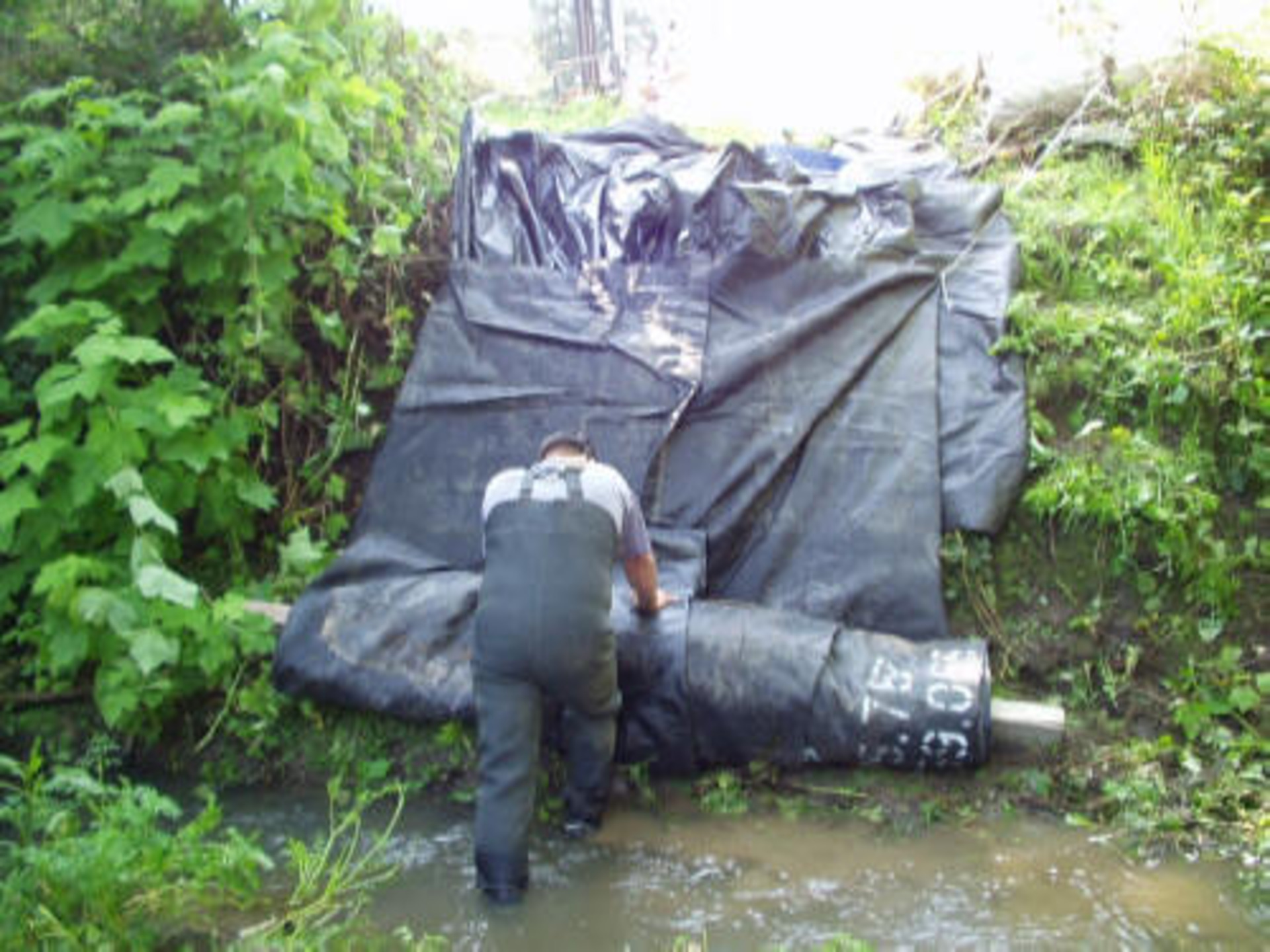
This is a 3ft tall single closed end (SCE) AquaDam with a baffle and it is about to undergo a field test to see how it reacts when the maximum water level is exceeded. The AquaDam is started high up the bank to ensure that it will be able to reach its full height. A worker holds it back as it fills to maintain interior pressure. To ensure proper installation and functionality of a SCE AquaDam, it is essential to have a starting bank that maintains a higher elevation than the body of the AquaDam. The open end and fill-tubes of the SCE AquaDam must remain elevated above the full height of the dam along its designated path. It is important to note that an AquaDam will only reach its maximum height at the lowest elevation point along its designated path.
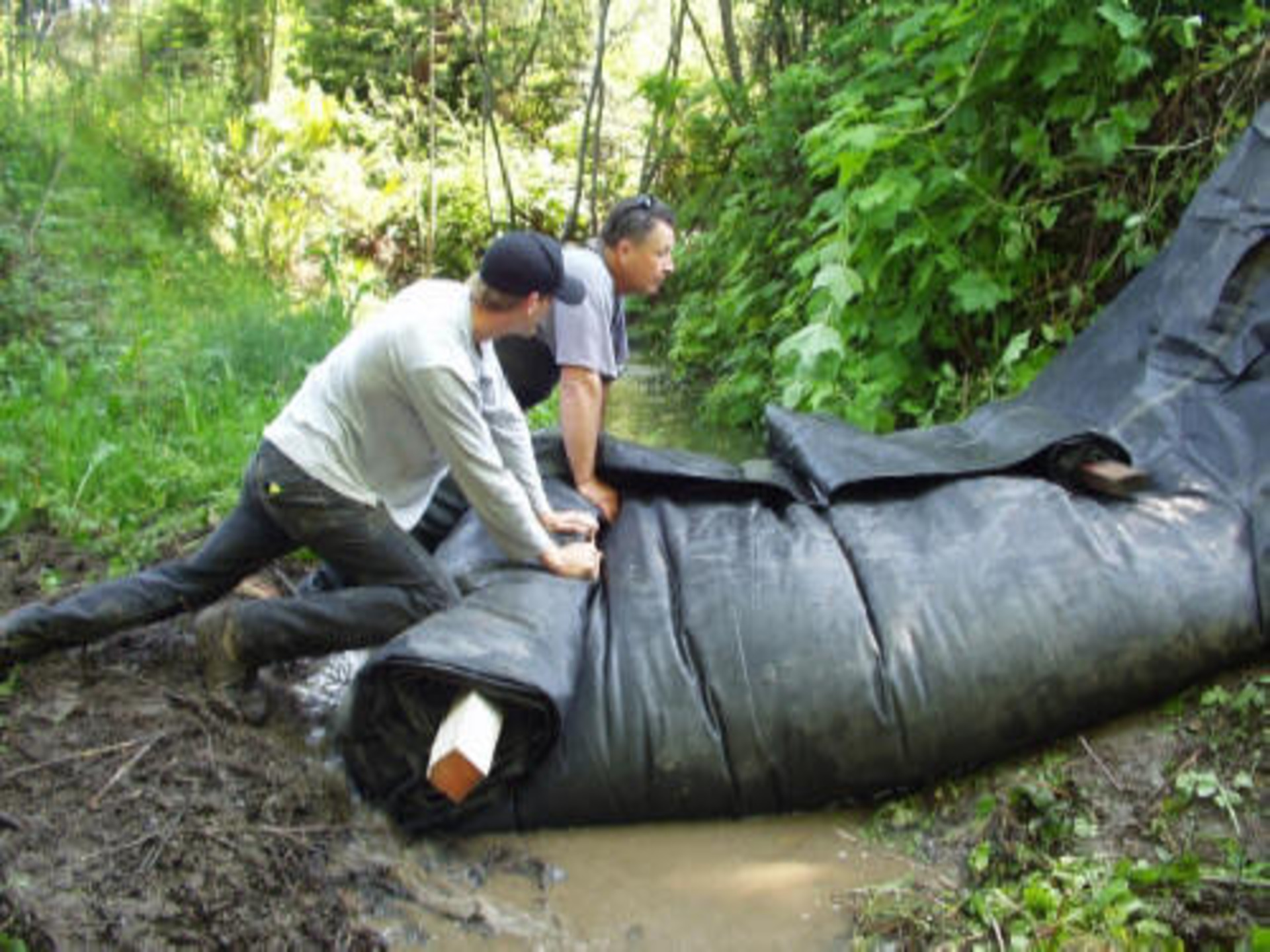
As the AquaDam fills, pressure builds inside, and a second worker is needed to help hold the roll. The workers stop the dam just before it cuts off all of the flow. This is important, because if the AquaDam has too much water pressure behind it and not enough head inside, as it is filling, then it could be pushed downstream. The baffle provides additional support.
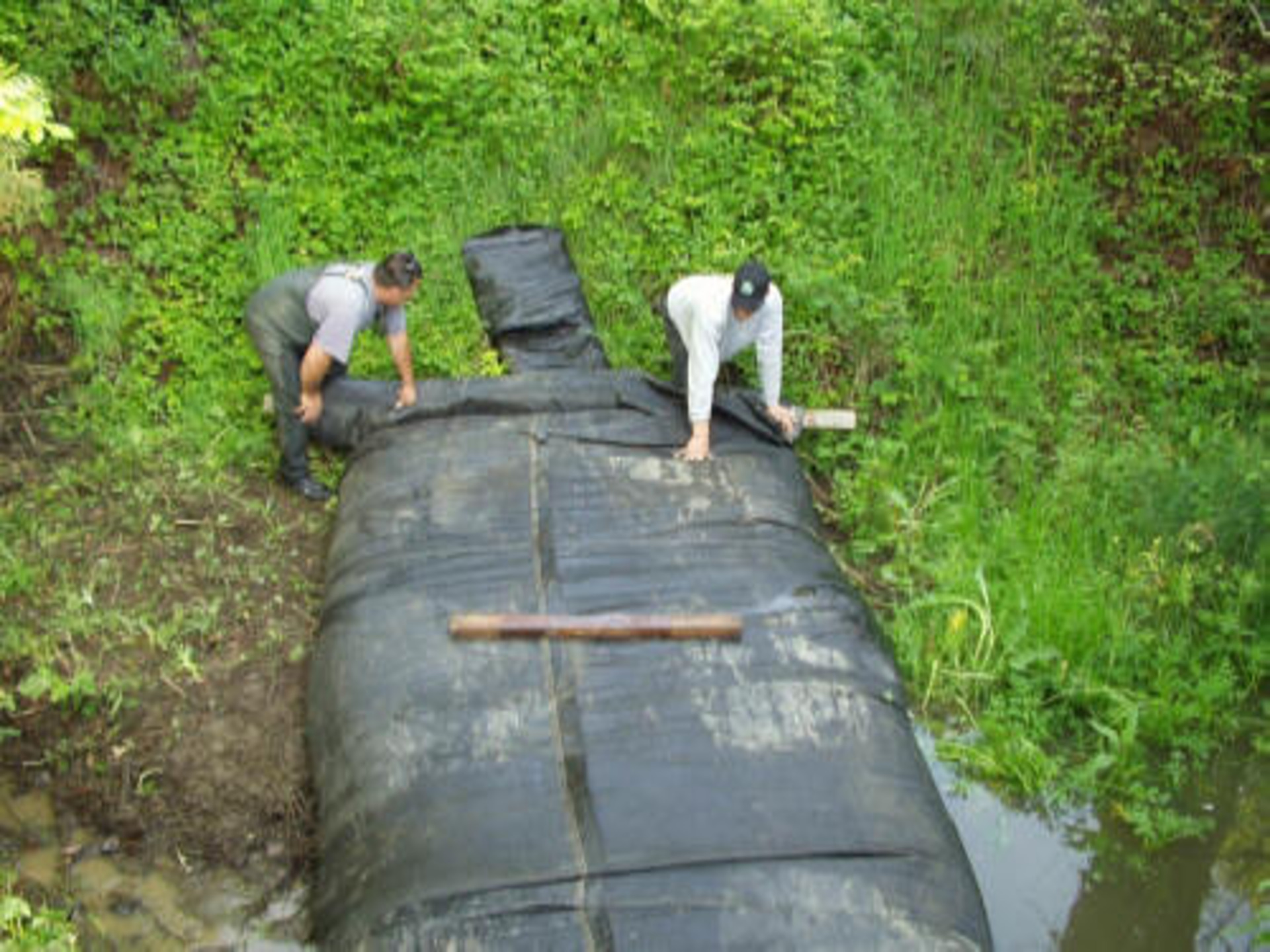
Once the AquaDam has plenty of head inside, the workers allow it to finish unrolling. A small 1ft tall SCE AquaDam was laid underneath the larger unit to improve the seal with the ground. Almost no water was able to seep underneath with this additional smaller AquaDam.
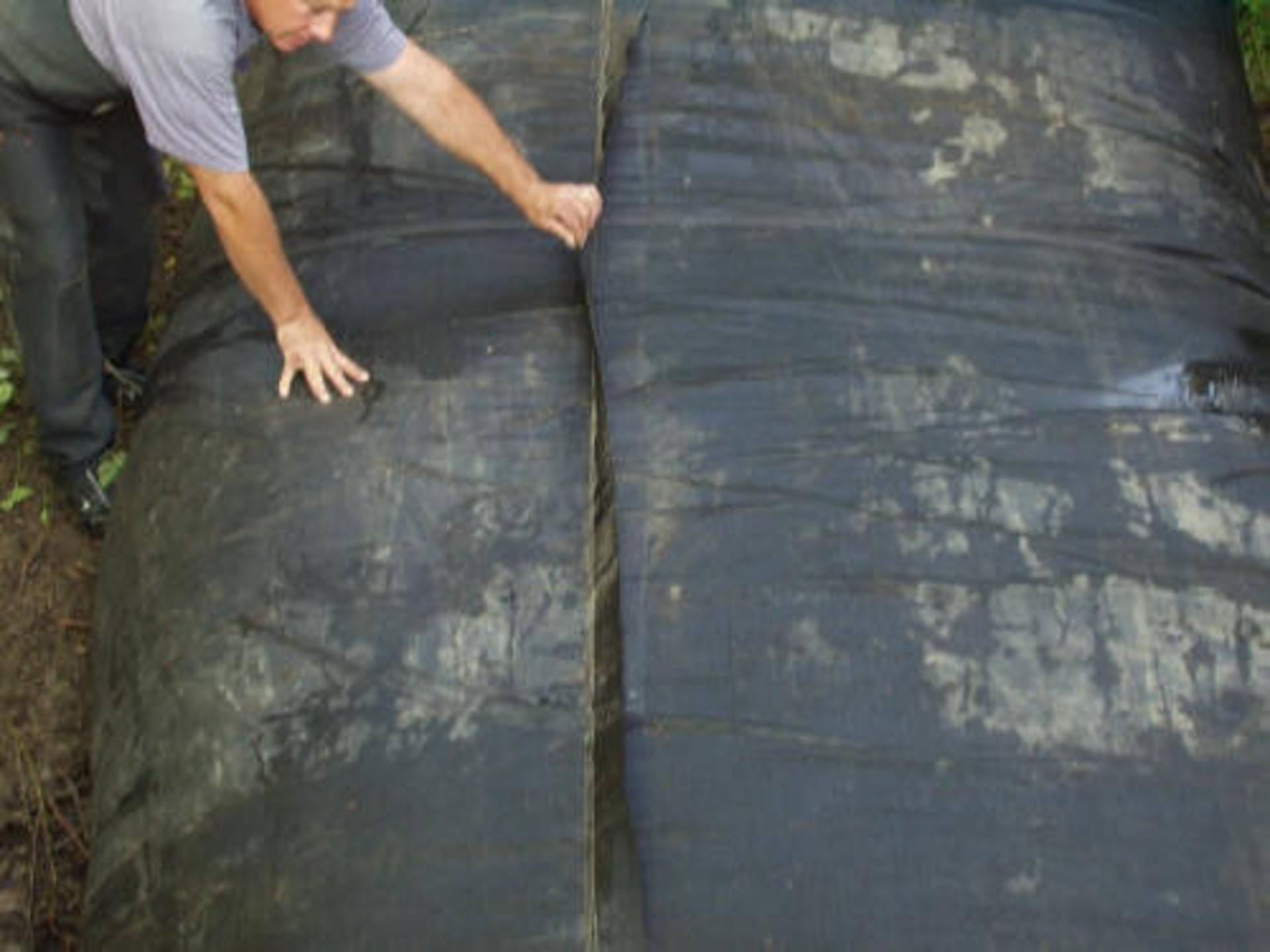
A view of the seam where the interior baffle is attached to the outside sleeve, splitting it into two sections. This seam is reinforced on all AquaDams. The seam is left with 4-6 inches of material to allow for a pipe to be used to create a stronger tie-off point. Using a rope, this point can be tied back to a tree along the bank, allowing for more stability.
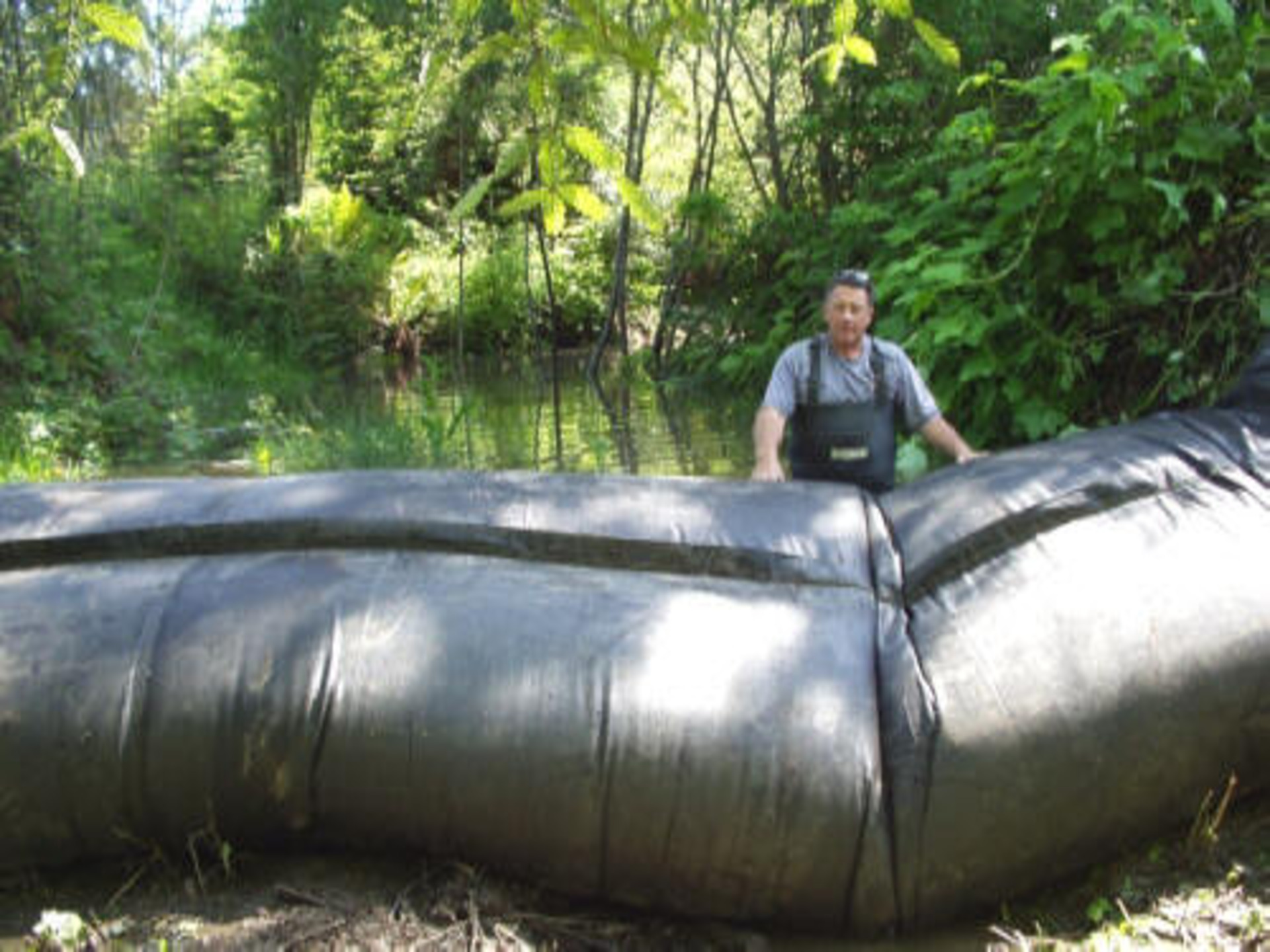
The water is now over 3ft deep against the side of the AquaDam; however, the AquaDam is only 3ft tall. The unit will not allow water to spill over the top, because the tube on the upstream side is being squeezed between the water pressure in the reservoir and the downstream inside tube of the AquaDam.
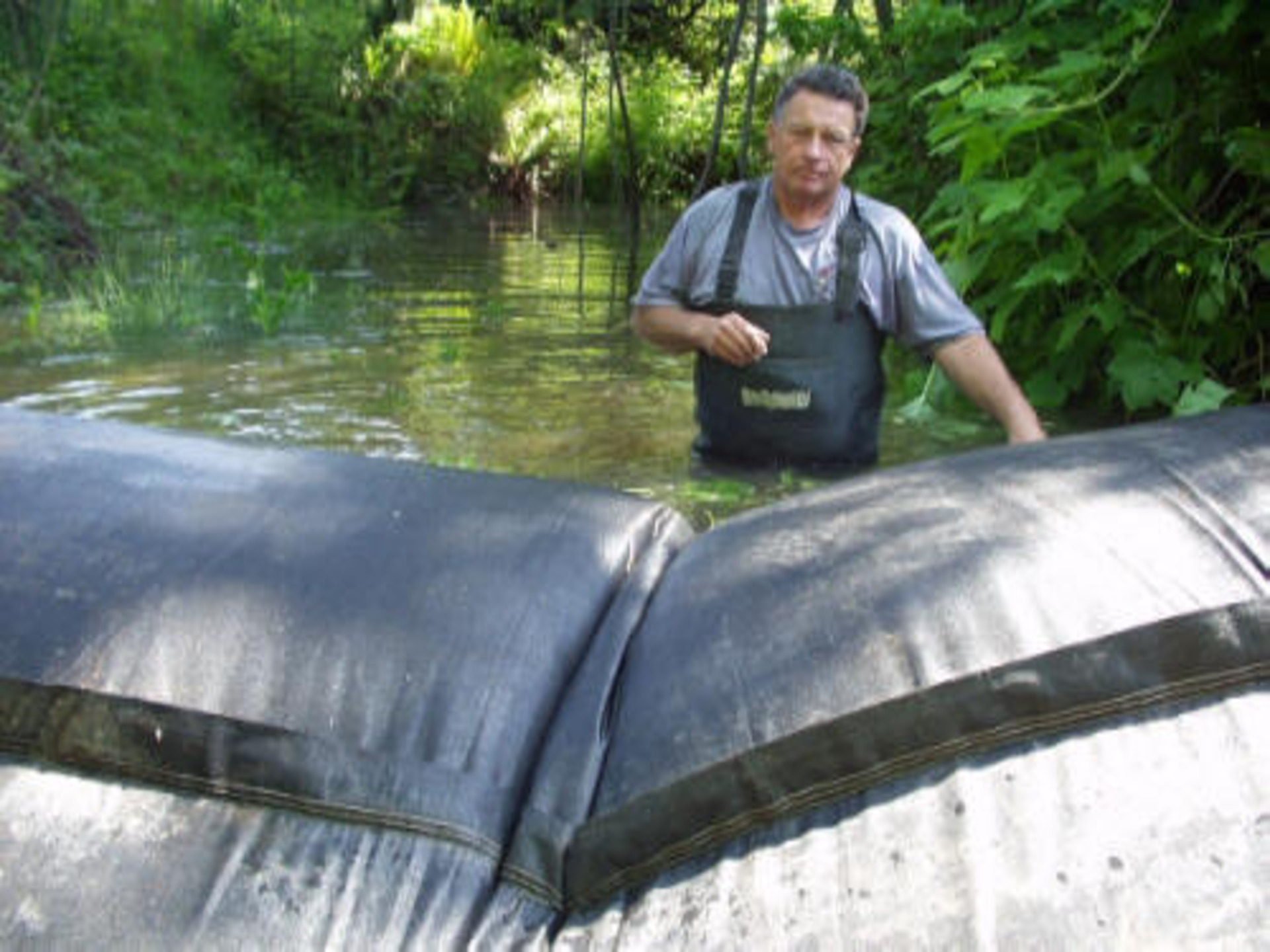
The upstream tube begins to lift off the ground as the water pressure on one side increases above 3ft in water depth. The water is now well over 3ft deep at the lowest point of the creekbed.
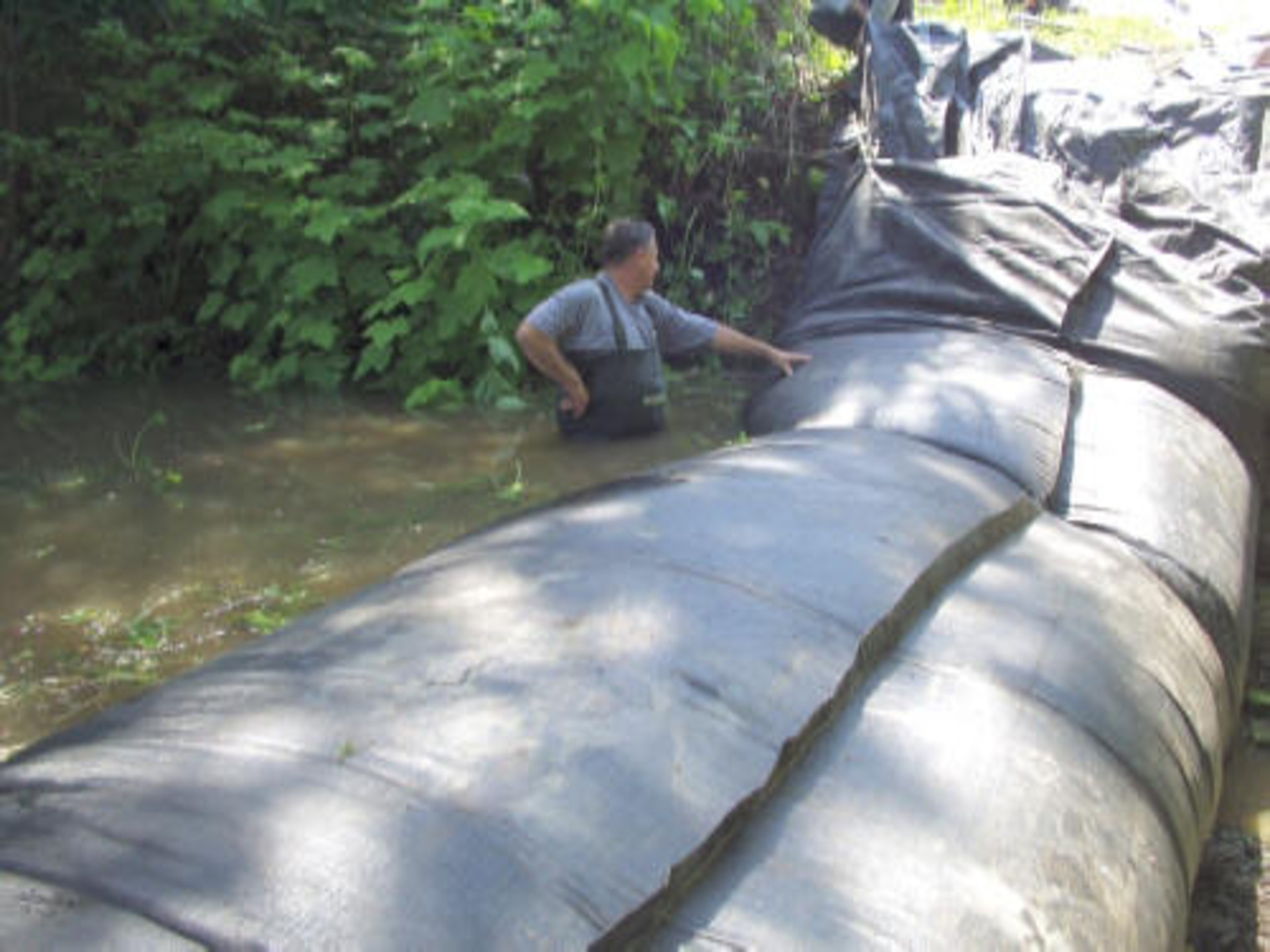
The upstream tube continues to lift as the water pressure behind it increases. Notice how the water inside the elevated end of the AquaDam rises much higher than the rest of the unit.
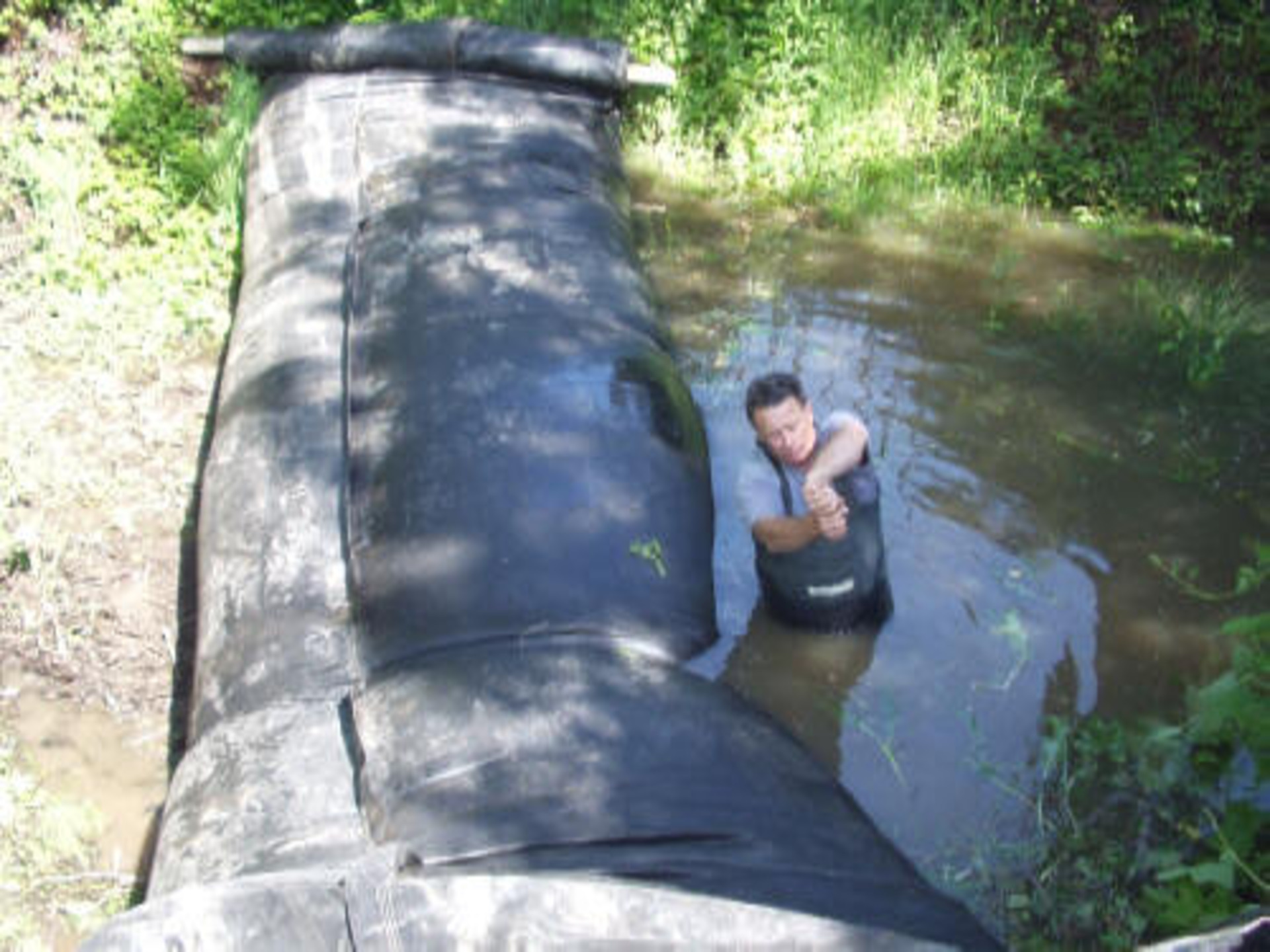
The water pressure against the side of the AquaDam continues to build as the water in the reservoir gets deeper. A worker is showing how the upstream side of the AquaDam is about to flip up and over the downstream side. Notice how dry the downstream side is.
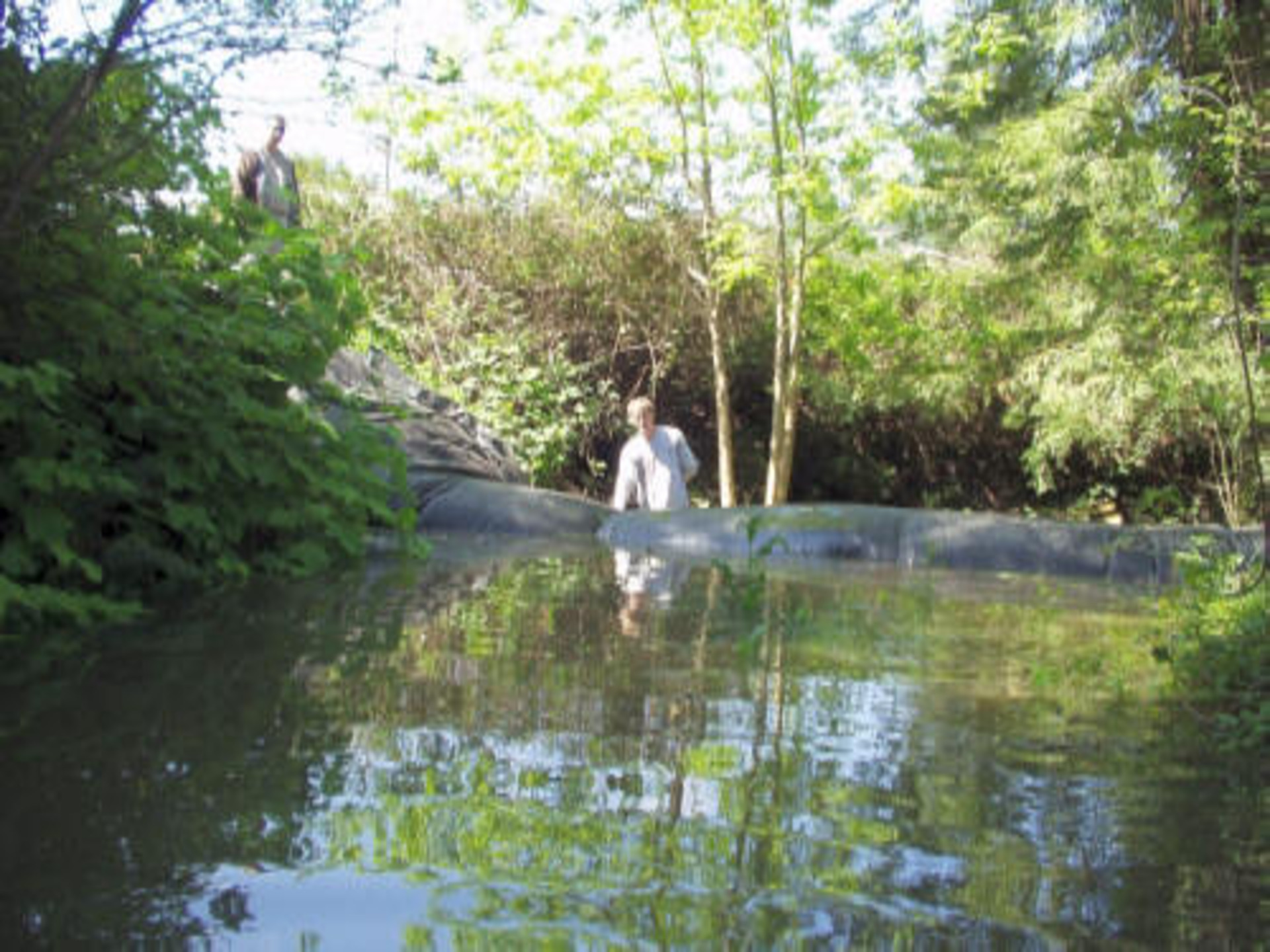
The water level behind the AquaDam is within inches of the top. The inside tube simply rose higher, surpassing the recommended maximum water depth for this size. The baffle provided additional support and did not allow water to flow over the top of this two sided baffled AquaDam.

The AquaDam has turned so that one side is resting completely on top of the other, and the dam is about to wash out. The water depth now far exceeds the recommended maximum water depth for this sized AquaDam.
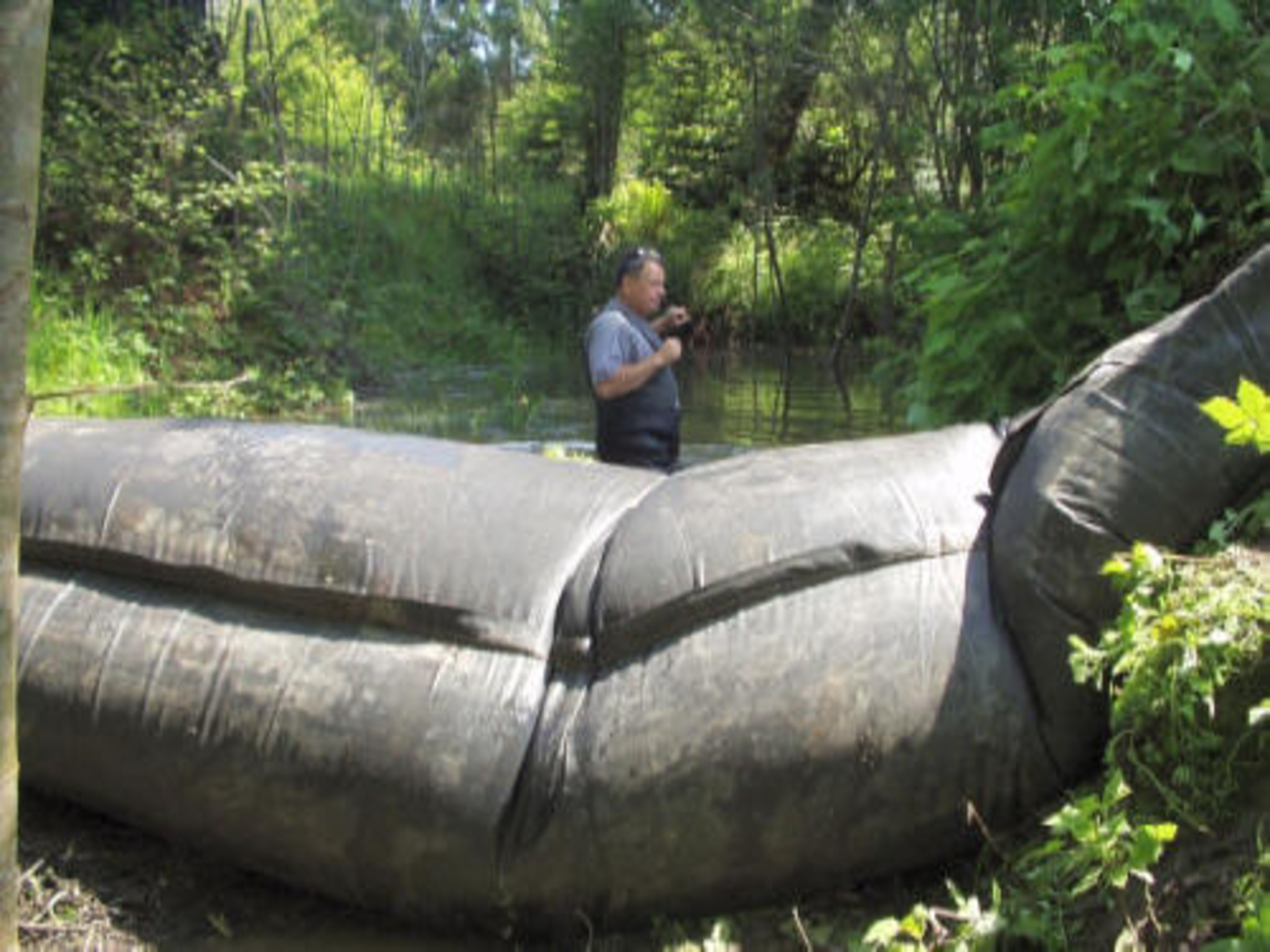
You can see that the AquaDam is about to flip over itself. The baffle has provided additional stability compared to a non-baffled AquaDam, but eventually, the AquaDam flipped all the way over itself, pulling the open end off it’s starting bank.
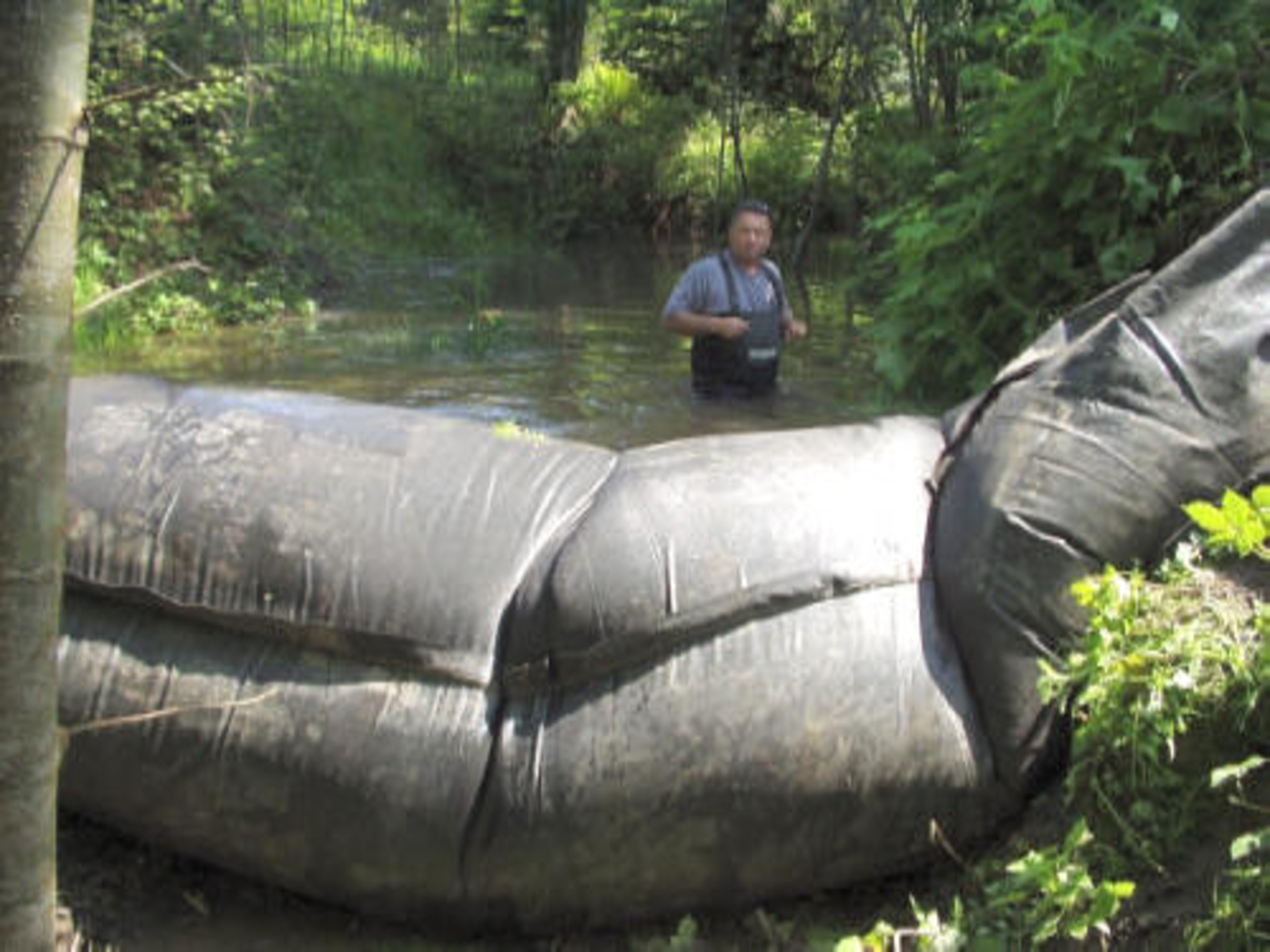
The AquaDam is just about ready to flip over.
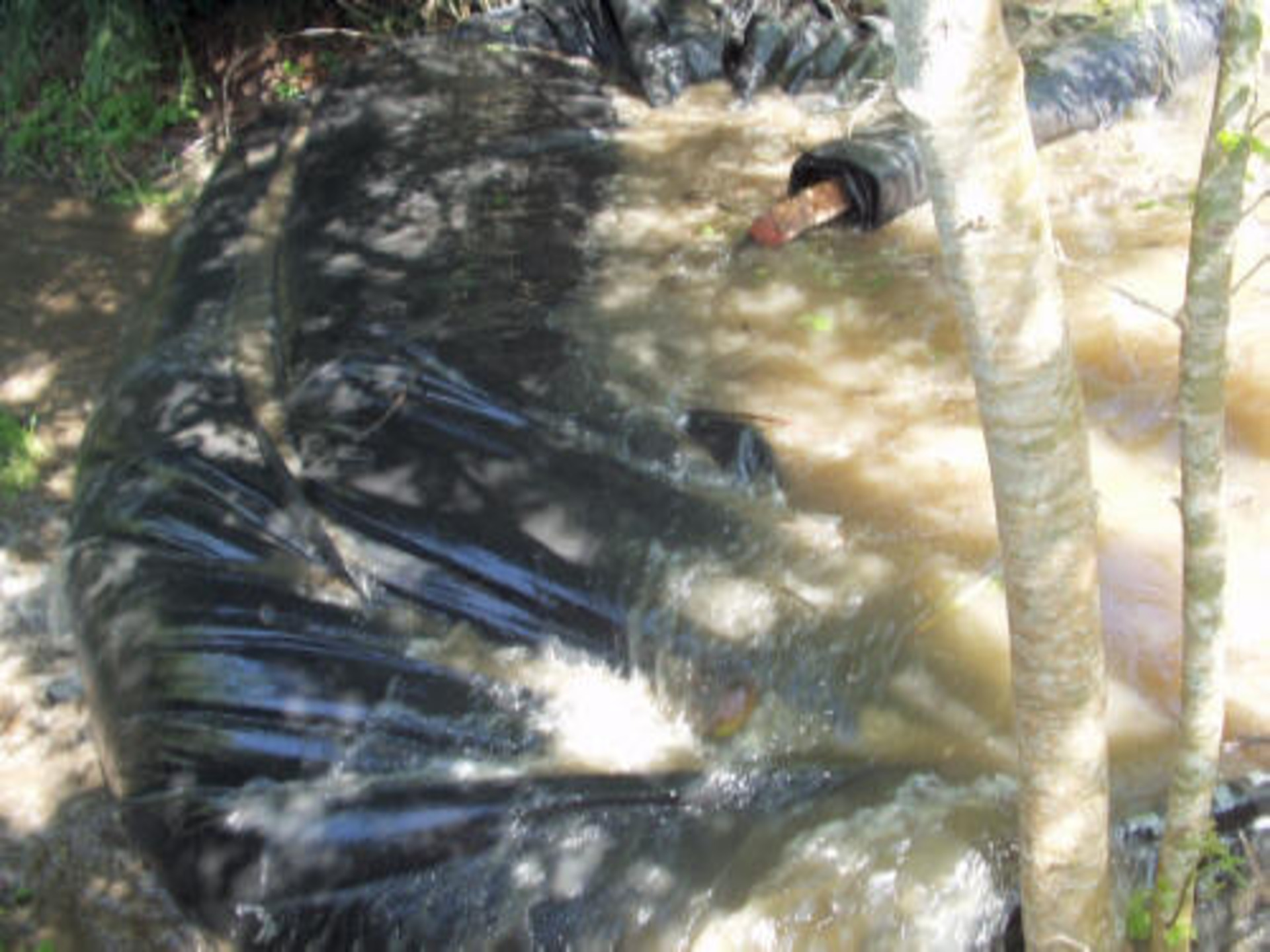
It all happened in less than a second. The AquaDam was overpowered by the water it is holding back and washed out. This unit actually flipped from bottom to top, but only after the water depth had surpassed the original height of the AquaDam. The water depth actually achieved grater than 4ft in depth before washing out.
